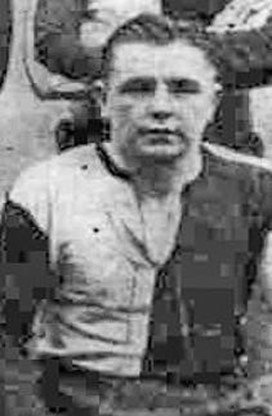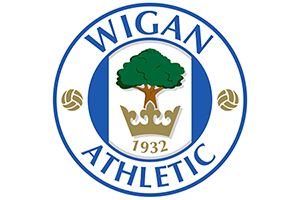Vincent Murphy - Player Profile

| Full Name: | Vincent Murphy |
| Born: | 13/05/1907 |
| Died: | 01/01/1970 (age 62) |
| Place of Birth: | Gateshead |
| Nationality: | England |
| Position: | Midfield |
| First Team Debut: | 27/08/1932 v Port Vale Reserves (H) - Cheshire County League |
| Signed: | 20/08/1932 (Free) |
| Left: | 31/05/1933 (Free) |
Vincent Murphy (born 13 May 1907) was an English footballer from Gateshead whose playing career spanned the 1920s and 1930s. He was a left winger (outside-left) known for delivering accurate crosses. Murphy’s career saw him move through numerous clubs across England and a stint in Scotland, including early days in local North-East teams and later appearances in the Football League’s lower divisions.
Early Years in Tyneside (1925–1927)
Local Beginnings: Murphy began his football journey in the mid-1920s playing for local clubs in the Tyneside area. He first featured for Newcastle Swifts in the 1925–26 season, an amateur side where he cut his teeth in competitive football. The following year, he joined Jarrow (1926–27), another North-Eastern club, which competed in regional leagues. These formative experiences in Newcastle and Jarrow helped Murphy develop his skills and gain visibility beyond his hometown.
Move to Professional Football: Murphy’s performances at the regional level attracted attention from Football League scouts. By 1927, he earned a chance in the professional ranks when Grimsby Town signed him. Grimsby, at that time a Second Division club, brought the young winger in ahead of the 1927–28 season. Though joining a professional outfit marked a significant step up, Murphy struggled to break into Grimsby’s first team. He did not make any official league appearances for Grimsby Town during the 1927–28 campaign, indicating he was likely used in reserve matches or as squad depth. Despite the lack of first-team action, his inclusion in Grimsby’s squad reflected his growing reputation from the North-East amateur scene.
Bournemouth & Boscombe Athletic (1928)
In the summer of 1928, Murphy transferred to Bournemouth & Boscombe Athletic (now known as AFC Bournemouth) as the Third Division South club sought to bolster its wing options. He joined Bournemouth in July 1928, ahead of the 1928–29 season, and featured in the early part of that campaign.
League Appearances: Between August and November 1928, Vincent Murphy made 6 league appearances for Bournemouth & Boscombe Athletic. These appearances were in the Third Division South, under manager Leslie Knighton’s tenure (Knighton managed Bournemouth until 1928). Murphy primarily played as a left-sided midfielder/winger. Although his spell on the south coast was brief, he gained valuable league experience. He did not score for Bournemouth in those six games, serving mainly as a provider on the flank. By November 1928, Murphy’s time at Dean Court came to an end – he left the club as Bournemouth made changes to their squad.
Transfer to Walsall: In November 1928, Murphy signed with Walsall, moving back inland to a Midlands club. This mid-season transfer gave Murphy an opportunity to find more regular playing time. Walsall competed in the Third Division South alongside Bournemouth, so Murphy remained at the same tier but with a new team.
Walsall (1928–1931)
Murphy’s tenure at Walsall was the longest sustained period of his Football League career. Joining in late 1928, he stayed with the Saddlers through the 1930–31 season. During these years, Walsall was a Third Division South side (later shifting to Third Division North in 1931 due to league reorganization). Murphy gradually established himself as a useful winger for the club.
1928–29 Season: After arriving at Walsall around November 1928, Murphy made an immediate impact. He tallied 15 league appearances for Walsall in 1928–29, scoring 2 goals (both in league matches). One notable appearance was on 2 March 1929, when Murphy played as Walsall’s left winger (wearing the #11 shirt) against Coventry City in a Third Division South fixture. Contemporary match reports confirm Murphy in the starting lineup for that game, which ended 1–1 at Highfield Road. His presence in Walsall’s XI by spring 1929 indicates that he quickly earned the trust of the manager, Jimmy Kerr, and became a regular in the latter half of the season. Murphy’s contributions (including his 2 goals) helped Walsall finish in mid-table (they placed 13th that season).
1929–30 Season: Murphy continued as part of Walsall’s squad into the 1929–30 campaign. He made 12 league appearances and scored 2 goals in that season. Walsall had a fairly stable season in Third Division South, and Murphy’s role was that of a rotation winger. While not an ever-present, he was frequently called upon for his crossing ability and work rate on the left flank. By this time, Murphy was recognized as a consistent performer, though Walsall’s overall results were modest.
1930–31 Season: The following season saw Murphy’s involvement at Walsall decrease. He featured only 3 times in the league during 1930–31, and did not score in those appearances. Walsall’s league status shifted that year – they were one of the clubs moved to Third Division North for 1931. Murphy’s limited play suggests he might have lost his starting spot, possibly due to competition for places or injury. It proved to be his final season with the Saddlers.
By the close of the 1930–31 season, Murphy had accumulated a total of 30 league appearances and 4 goals for Walsall over his stay. His two-and-a-half years in the Black Country gave him a solid footing in professional football and would be remembered as a significant phase of his career.
Notts County (1931–1932)
In 1931, Murphy earned a chance with Notts County, a historically prominent club. Notts County were playing in the Second Division at the time Murphy joined (1931–32 season). The step up to a higher division was an ambitious move for Murphy, reflecting his experience garnered at Walsall and Bournemouth.
At Meadow Lane: Despite signing for Notts County, Vincent Murphy did not make any first-team league appearances for the club in the 1931–32 season. He was part of County’s squad but found opportunities scarce in a strong team. It’s likely he featured in reserve matches or was kept as cover for the wing positions. Notts County’s squad in that era included established players, and Murphy was unable to break into the matchday XI. After a year on County’s books without playing in the League, Murphy was released or allowed to leave in 1932.
In 1932, a brand-new club in Lancashire – Wigan Athletic – was formed and entered into competition. Wigan Athletic were established in August 1932, aiming to fill the void left by the defunct Wigan Borough. As a freshly formed club, Wigan Athletic needed experienced players to build a competitive side. Vincent Murphy, by now 25 years old and well-traveled in lower-league football, fit this need perfectly.
Signing for Wigan: Murphy reunited with several fellow North-East native players – in fact, Wigan’s first squad famously included many “Geordies” (players from the North-East). Manager Charlie Spencer (a former Newcastle United captain) deliberately recruited experienced men from the North-East, and Murphy was noted as “a very experienced player” who had already turned out for Grimsby, Bournemouth, Walsall, and Notts County. This breadth of league experience made Murphy one of the more seasoned members of the fledgling Wigan team.
Cheshire County League 1932–33: Their first season (1932–33) was spent in the Cheshire County League. Murphy made his debut for Wigan in the club’s historic first match on 27 August 1932, against Port Vale Reserves at Springfield Park. Playing on the left wing, he was part of Wigan’s inaugural starting lineup that day. Although Wigan lost 0–2 in their debut, Murphy’s performance helped establish the team’s competitiveness.
Over the 1932–33 season, Vincent Murphy was ever-present in the league, making 40 appearances in the Cheshire League for Wigan Athletic. His partnership on the left flank with teammate Allan Hughes (on the right wing) gave Wigan strength on both wings.
Murphy’s experience proved invaluable as Wigan Athletic had a remarkably strong inaugural season. The team, loaded with veteran talent, performed well in league competition. By the end of 1932–33, Wigan Athletic finished as runners-up in the Cheshire County League, narrowly missing the title (they were just behind Macclesfield in the final table). Murphy’s consistency (40 league games) was a major contributing factor to Wigan’s successful first campaign.
Departure: Murphy left Wigan Athletic at the end of the season, on 31 May 1933. The one-year spell at Wigan revitalized his career and remains significant: he etched his name in Wigan Athletic’s early history as one of the club’s first-ever players and consistent performers. In total, Murphy made 44 appearances for Wigan Athletic in all competitions, cementing his status as an inaugural season hero for the Latics.
Gateshead (1933–1934)
After his success with Wigan, Murphy returned once again to his native North-East in 1933. This time, he signed with Gateshead A.F.C. for the 1933–34 season. Gateshead had recently (in 1930) relocated and been renamed from South Shields; by 1933 they were an established club in the Third Division North of the Football League. For Murphy, joining Gateshead represented a move back to league football (after a year in non-league with Wigan) and a chance to play for a club in his home Tyneside region. It was also a sort of homecoming – Murphy was born in Gateshead, and now got to represent his hometown club.
League Appearances: Murphy’s stint at Gateshead would prove to be brief. In the 1933–34 season, he made only 2 appearances in the Football League Third Division North for Gateshead. This low number suggests that Murphy was not a regular; he may have been signed as experienced cover or perhaps suffered an injury early on. Gateshead’s squad had other established wingers, and competition for places was stiff. By the time he arrived, Murphy was 26 and possibly past his peak form displayed at Wigan.
Despite the limited game time, being on Gateshead’s roster in that season meant Murphy was part of the squad during a challenging campaign. Gateshead struggled in 1933–34 and finished near the lower end of the table. Murphy’s two appearances would have contributed modestly to the club’s efforts. After the season, Murphy was released or he chose to move on, seeking more playing opportunities elsewhere.
Ayr United (1934–1935)
Following his short spell at Gateshead, Murphy made an uncommon career move in 1934 by heading north of the England–Scotland border. He joined Ayr United for the 1934–35 season. Ayr United competed in the Scottish First Division at that time. For Murphy, this was a chance to play in Scotland’s top flight – a notable step, as few English lower-division players moved to Scottish clubs back then.
Ayr United in 1934–35: The club’s 1934–35 campaign was a difficult one. Ayr United finished 18th in the Scottish First Division (last place) and were relegated at the season’s end. The team won only a handful of matches all season, leading to their drop to the Second Division. Murphy joined the squad likely to add depth on the wings, but given the overall struggles, it was a tough environment to shine.
By summer 1935, after Ayr United’s relegation, Murphy departed the club. His time in Scotland, albeit short and without much personal highlight, added a cross-border chapter to his career.
Crook Town (1935–1936 and Later Years)
The 1935–36 season saw Vincent Murphy return to English non-league football, effectively winding down his playing days. He signed with Crook Town in County Durham for 1935–36. Crook Town were a well-known amateur side, competing in the Northern League, one of the country’s top amateur leagues. Crook Town in the 1930s had a strong reputation, even winning the FA Amateur Cup in other years (they lifted that trophy five times in their history).
1935–36 at Crook Town: Murphy joined Crook Town likely as one of a few ex-pros to bolster the team. Details of his appearances are not recorded in the public domain, as amateur matches did not receive the same detailed documentation. However, it’s known that Murphy spent the full 1935–36 season with Crook Town. The club competed in Northern League fixtures and local cup competitions. Murphy’s experience would have been valuable in matches against neighbouring amateur clubs, and it’s quite possible he helped mentor younger players. Crook’s exact league standing that season isn’t noted in sources, but the mid-1930s were a competitive time in the Northern League.
Retirement: After the 1935–36 season, Vincent Murphy likely retired or stepped away from high-level football. By this point he was around 28–29 years old and had been playing competitively for over a decade. It appears he did not continue in senior football beyond 1936. His last known club was Crook Town – a fitting place to conclude his career, back in the North-East close to home.
Later Life and Legacy
Little is documented about Murphy’s life after football. Having spent his final playing years in County Durham, it is possible he settled in the North-East of England. There is some evidence that he returned to Gateshead in his post-playing days – genealogical records suggest a Vincent Murphy in Gateshead had a family in the 1940s, which may well have been the former footballer. If so, Murphy would have transitioned to a normal working life after hanging up his boots, as was common in that era.
What is clear is that Vincent Murphy’s legacy lives on through the historical records of the clubs he served. He is remembered at Wigan Athletic as part of the club’s founding story – the official Wigan Athletic heritage archives highlight his role in the 1932–33 team and note his popularity with supporters. At Walsall, he is noted in match archives and team line-ups from the late 1920s, contributing to Walsall’s history in the Third Division South. His name also finds mention in the lore of North-East football – having been one of several Tyneside players who ventured into the Football League and beyond.
Vincent Murphy passed away later in life, with one record indicating he may have died in 1970 in Kent, at the age of 62. While this detail is not fully confirmed in football sources, it aligns with a possible post-career relocation.
Wigan Athletic Career
| League | FA Cup | League Cup | Other | Total | |||||||
|---|---|---|---|---|---|---|---|---|---|---|---|
| Season | Apps | Goals | Apps | Goals | Apps | Goals | Apps | Goals | Apps | Goals | |
| 1932-1933 | 40 (0) | 7 | 0 (0) | 0 | 0 (0) | 0 | 4 (0) | 0 | 44 (0) | 7 | |
| TOTALS | 40 (0) | 7 | 0 (0) | 0 | 0 (0) | 0 | 4 (0) | 0 | 44 (0) | 7 | |


